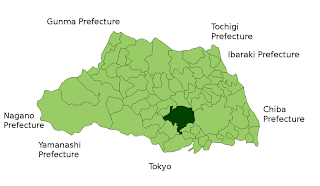My Adventures in Japan Part 1: Nikko and Kawagoe
 This is a picture of Tosho-gu Shrine.
This is a picture of Tosho-gu Shrine.The first place I went to was Nikko. I went in October. The leaves were very beautiful.
 I went to Yokohama to celebrate my first New Year's Eve in Japan. First I went to China Town. I ate Yaki soba. Japanese traditionally eat soba on December 31st.
I went to Yokohama to celebrate my first New Year's Eve in Japan. First I went to China Town. I ate Yaki soba. Japanese traditionally eat soba on December 31st. Then I went to a countdown party on the Hikawa Maru.
Then I went to a countdown party on the Hikawa Maru. After the countdown party, I went to Landmark Tower. I saw the sun rise. It was very beautiful. The picture below is Landmark Tower.
After the countdown party, I went to Landmark Tower. I saw the sun rise. It was very beautiful. The picture below is Landmark Tower. On New Year's Day I went to Kawagoe. Kawagoe is also known as "Little Edo" (小江戸) because it is much like Edo (Tokyo's name during the rule of the Tokugawa Shogunate).
On New Year's Day I went to Kawagoe. Kawagoe is also known as "Little Edo" (小江戸) because it is much like Edo (Tokyo's name during the rule of the Tokugawa Shogunate).
 As you can see, many people come to pray for good luck in the new year.
As you can see, many people come to pray for good luck in the new year. This a good example of the mixture of traditional and contemporary culture that you can see everywhere in Japan.
This a good example of the mixture of traditional and contemporary culture that you can see everywhere in Japan. In this picture I'm standing next to a stand selling daruma (達磨).
In this picture I'm standing next to a stand selling daruma (達磨). This is a picture of one of the many interesting shops in Kawagoe.
This is a picture of one of the many interesting shops in Kawagoe.






































